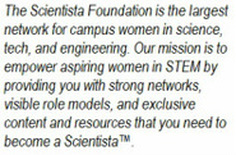|
By Deanna Ratnikova Planning on graduate school in your field? Applications for most STEM graduate programs are due between December and February, and there are many steps involved. Using this schedule will give you more time to prepare and refine your application for admission in the fall. April - August [x] Take the GRE (Graduate Record Examination) general test.
[x] If you are applying from a non-English-speaking country, you will need to take the IELTS (International English Language Testing System) and/or the TOEFL (Test of English as a Foreign Language), depending on the requirements of the schools to which you are applying. [x] Start your graduate school search. If you’ve been out of college for a while, consider paying a visit to your alma mater to meet up with former professors in your proposed field of study. They can recommend graduate programs and may help you make connections. September-October [x] Narrow your graduate school choices and pick a professor or two from each whose research interests match your own. You may wish to make contact with these faculty members. [x] Take the GRE subject test, if it is required by your prospective graduate schools (even if it is not required you may want to take it anyway—a good score will help differentiate you from other applicants). [x] Draft your answers for application essays. Have a faculty member, admissions/career counselor, or supervisor read these essays and provide feedback. [x] Ask for letters of recommendation.
Read our advice on how to ask for a letter of recommendation here. November [x] Check and record the application deadline for each program to which you are applying. Some graduate programs have deadlines as early as December. [x] Arrange for your transcript to be sent to each program to which you are applying. [x] Finalize your application essays. [x] Arrange a campus visit, if you can, to your prospective schools. December [x] Follow up with faculty on the letters of recommendation. Make sure they are aware of the deadline(s). [x] Complete the applications for programs with December deadlines. January [x] Complete the remainder of the program applications. Many schools confirm receipt of the application, so if you do not receive a confirmation, follow up prior to the deadline to ensure your application was successfully submitted. February [x] If you qualify, complete the FAFSA (Free Application for Federal Student Aid) online. Research additional financial sources such as National Science Foundation (NSF) scholarships and private loans, grants and fellowships. March-April [x] You should hear from schools regarding acceptance. If it is possible and you have not already done so, visit the schools to which you have been accepted. [x] Notify your chosen school of your acceptance, and notify the other programs that you are declining. About the Blogger Deanna Ratnikova is the Women and Education Programs Administrator with the American Physical Society. In this role, she works on the Women in Physics program and provides administrative support to the Education and Diversity Department. She earned a B.S. in Chemistry at Austin Peay State University and a Master of Public and International Affairs at the University of Pittsburgh. Comments? Leave them below!
0 Comments
Your comment will be posted after it is approved.
Leave a Reply. |
Education BlogAbout ScientistaSubscribe!NEW!New PostsWhat's HotClick to set custom HTML
You Might Like...
Connect With UsLatest tweets |
The Scientista Foundation, Inc. All Rights Reserved © 2011-2021 | Based in NY | [email protected]
The Network for Pre-Professional Women in Science and Engineering
The Scientista Foundation is a registered 501(c)(3) -- Donate!
The Network for Pre-Professional Women in Science and Engineering
The Scientista Foundation is a registered 501(c)(3) -- Donate!



 RSS Feed
RSS Feed









